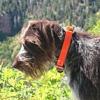HUnting Archery and Rifle Seasons
94 members have voted
-
1. Do you hunt deer in AZ with
-
firearms only11
-
bow only8
-
both firearms and bow75
-
-
2. If you hunt with a bow during the year, do you apply for a rile deer permit that same year?
-
yes74
-
no6
-
sometimes3
-
n/a, I only hunt with firearms11
-
-
3. If you receive a rifle deer permit, do you
-
hunt only the rifle season18
-
hunt the Aug-Sept archery season and then the rifle season39
-
hunt the Dec archery season if unsuccessful in the rifle season30
-
n/a I only bowhunt7
-
-
4. If you archery deer hunt, do you also apply for a rifle deer tag so you may hunt that season with a bow?
-
yes22
-
no, I do not apply for rifle permits4
-
no, I would hunt with a rifle if drawn57
-
n/a, I do not bowhunt11
-
-
5. If you archery deer hunt in Jan and are unsuccessful, do you
-
only hunt the Aug-Sept and/or the Dec archery deer seasons7
-
apply for a rifle der permit and then only hunt the rifle season if drawn9
-
hunt both the fall archery deer and rifle deer seasons until successful67
-
n/a, I do not bowhunt11
-
-
6. If you are unsuccessful in the rifle deer season, do you hunt the Dec archery season?
-
yes56
-
no8
-
sometimes18
-
n/a12
-
-
7. If AZGFD eliminated OTC archery deer permits and went to a draw system, would you
-
apply for archery deer permits only21
-
apply for rifle deer permits only31
-
apply for rifle deer first choice and then for archery deer permits36
-
apply for archery deer first choice, and then for rifle deer6
-
-
8. Do you support limiting archer deer harvest to 20% ?
-
yes, by permitting those units with a high success and having OTC in the rest15
-
yes, by permitting all archery deeer units5
-
yes, by having a harvest quota in each unit, similar to bear18
-
no, keep all units OTC as in previous years56
-
-
9. Do you feel archery deer hunters should also be able to apply for and hunt the rifle seasons?
-
yes81
-
no13
-
-
10. Do you feel rifle deer hunters should be able to also hunt the archery deer seasons?
-
yes77
-
no17
-

